Queens’ top news stories of 2022
Views: 747
By Jessica Meditz
jmeditz@queensledger.com
Given the events of the two years previous, 2022 was a year of opportunity for many.
It had its ups, but also its downs – and the borough of Queens was no exception.
The beginning of the year started with discussions of innovations in transportation, with Gov. Kathy Hochul’s announcement to move forward with the Interborough Express as part of her 2022 State of the State.
The proposed 24-mile Interborough Express would use existing tracks to connect 17 subway lines, four commuter rail lines and dozens of bus lines, with end-to-end travel time expected to be less than 40 minutes.
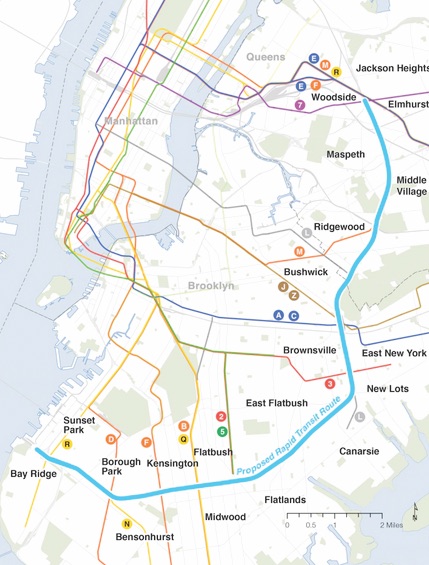
It would extend from Co-Op City in the Bronx to Bay Ridge in Brooklyn and could serve as many as 100,000 riders per day.
“It’s time to invest in the bold, cutting-edge infrastructure projects that will make a real difference in the lives of everyday New Yorkers,” Hochul said in a statement. “New Yorkers deserve reliable public transit that connects them from work to home and everywhere in between. The Interborough Express would be a transformational addition to Brooklyn and Queens, cutting down on travel time and helping neighborhoods and communities become cleaner, greener and more equitable.”
The conversation extended to more Queens residents advocating for the use of abandoned rail lines – such as the QNS plan, a proposal to reactivate and repurpose freight rail along the Lower Montauk Branch which runs through central Queens; and the QueensLink, a proposed 3.5-mile long transit and park corridor in the same space, which would connect northern and southern Queens.
The latter became a controversial issue in September, when Mayor Eric Adams came to Forest Hills to announce that the city plans to spend $35 million to begin phase one of construction for the QueensWay, a linear park along the 3.5 miles of abandoned railroad tracks, in place of the QueensLink.
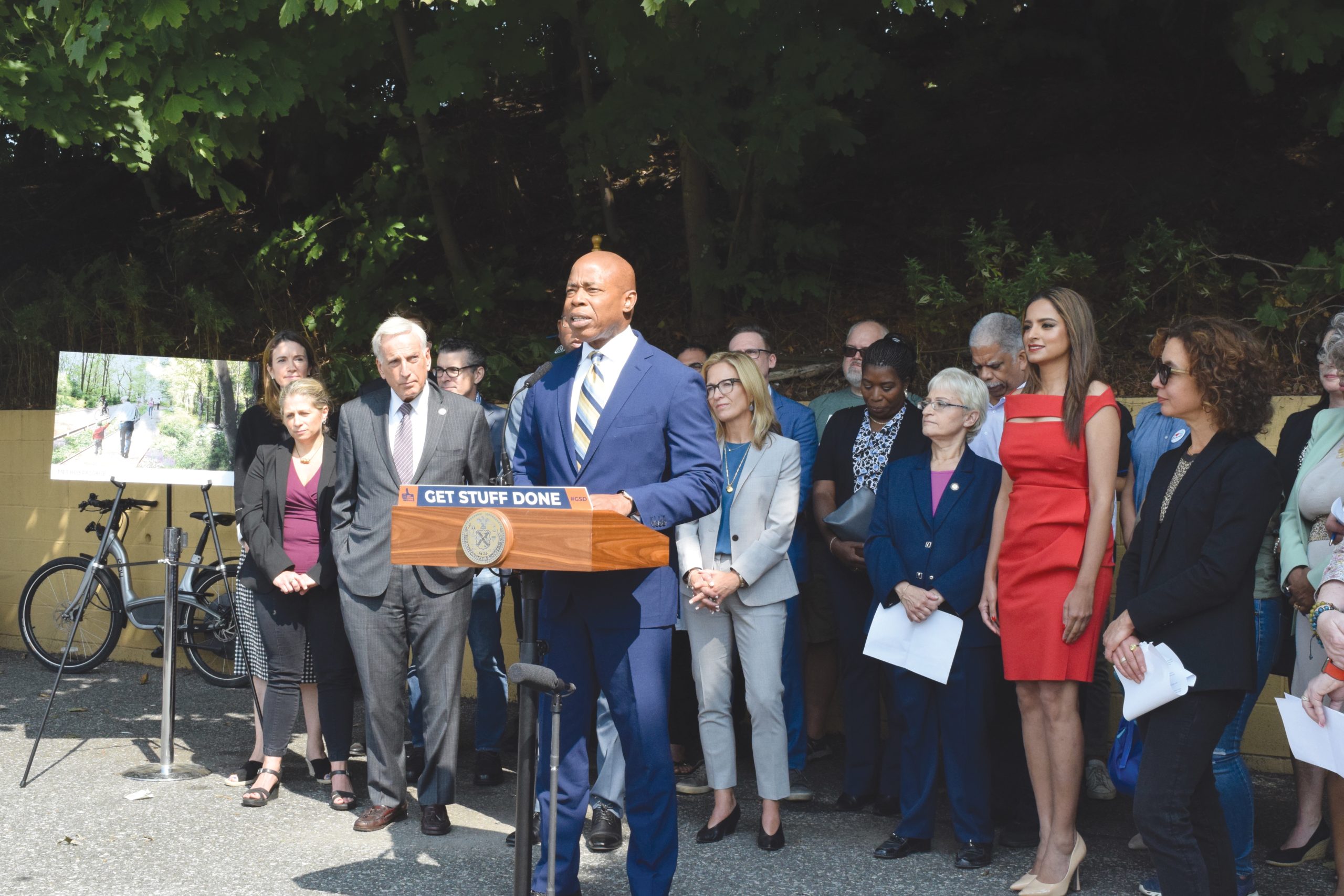
Friends of the QueensLink argued that the implementation of the QueensWay would shut out any future use of transit on the line and deprive Southern Queens residents of a faster commute and less traffic while reducing pollution and carbon emissions.
“They’re talking about transit, but they’re not doing anything about it. So the key is, if you really do care about public transit, and it’s not just a campaign slogan, then you need to take it seriously and study the integration of a Transit Link, which would be a subway and a park,” Rick Horan, executive director of QueensLink, said.
“Our goal is to try to see if there’s enough value in this project to get it there. But the only way we can do that is to study it,” he continued. “So we’ve been promoting an Environmental Impact Statement for QueensLink, which includes rail entry.”
An advancement in transportation that came to fruition was the completion of the massive Kew Gardens Interchange project after what feels like forever – 12 years, four phases and $739 million later.
The Kew Gardens Interchange is the complex intersection of the Grand Central Parkway, the Van Wyck Expressway, the Jackie Robinson Parkway and Union Turnpike. Its reconstruction allows for faster travel, safer merging and exiting and more reliable connections for travelers to get to JFK Airport and other prime destinations.

The interchange serves nearly 600,000 vehicles daily.
Within the political sphere, the gubernatorial election between Democrat Kathy Hochul and Republican Lee Zeldin was a hot button issue statewide, but also in Queens – with a rise in fears of crime and Zeldin’s tough-on-crime campaign approach.
While Hochul came out victorious, Zeldin’s visit to Glendale and another to Middle Village resonated with many locals.
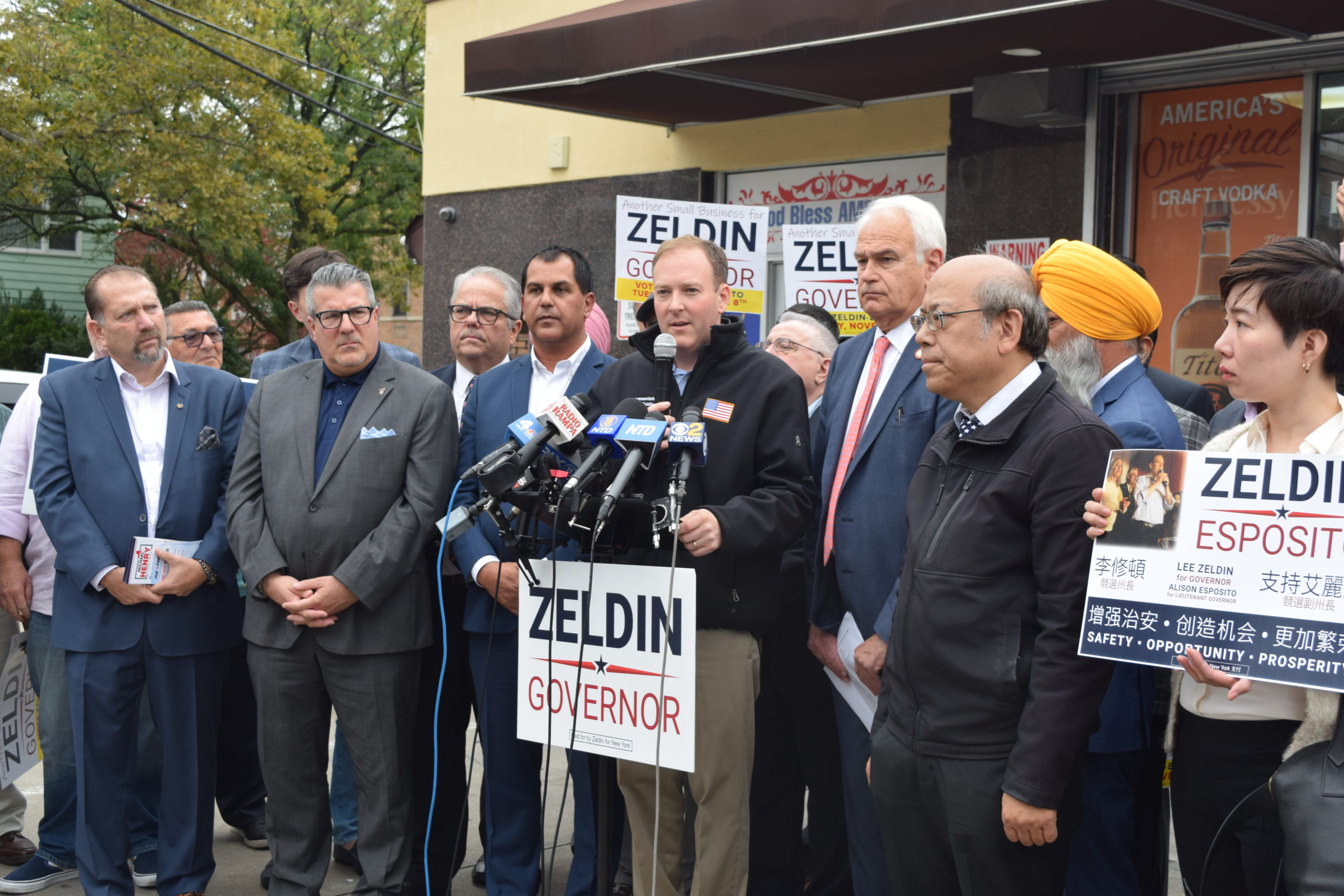
Even neighborhoods that were once considered “more tame” by residents, such as Forest Hills, were the setting for true crime stories right here in Queens.
The spring for Forest Hills was particularly somber this year, following the grisly killings of two individuals: Orsolya Gaal and Zhiwen Yan.
Gaal, a 51-year-old mother of two from Forest Hills, whose body was discovered in a sports duffel bag near Forest Park in April.

Forty-four-year-old David Bonola of South Richmond Hill was sentenced to 25 years in prison for the slaying, and police say the pair had an on-and-off romantic affair for two years while Bonola worked at her home on Juno Street as a handyman.
The community came together to mourn the life of Zhiwen Yan, a food delivery worker who worked at Great Wall Chinese Restaurant in Forest Hills and resided in Middle Village with his wife and three children.
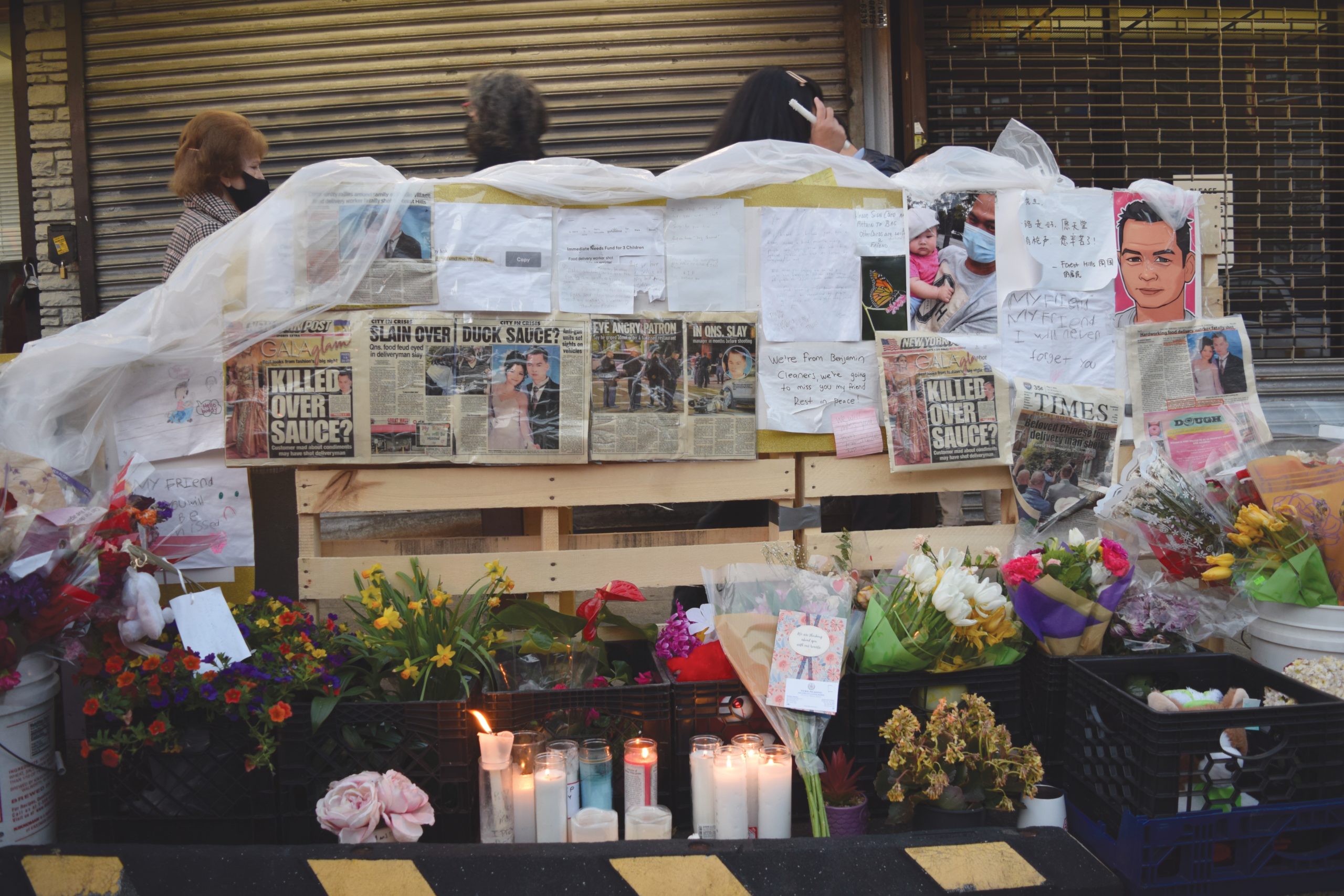
Yan, 45, was fatally shot on the night of April 30 while riding his scooter on his way to deliver food in Forest Hills.
Glen Hirsch, 51, of Briarwood was charged for the killing, but eventually got out on bail and then committed suicide before he could do his time.
The murder of 61-year-old FDNY EMS worker, Alison Russo-Elling, in Astoria shocked the entire city.
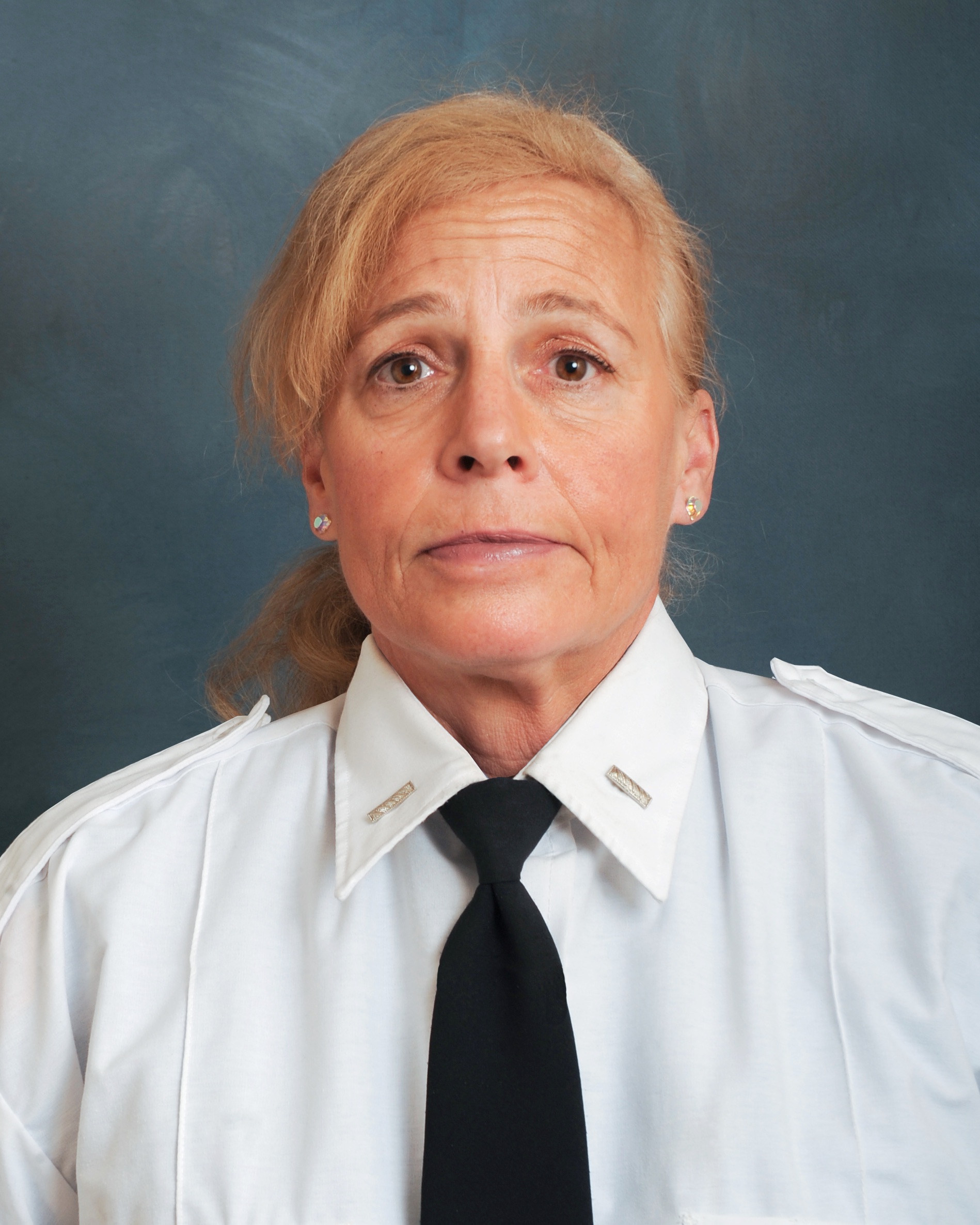
The 25-year veteran of the FDNY, who responded to the 9/11 attacks in 2001, was brutally stabbed in September near EMS Station 49 in an unprovoked attack.
Peter Zisopoulos, 34, was charged with murder in the second degree and criminal possession of a weapon in the fourth degree, according to Queens District Attorney Melinda Katz.
In terms of Astoria news, Innovation QNS – a project that seeks to rezone five city blocks to build a mixed use residential and commercial district in the neighborhood – was definitely the most talked about issue.
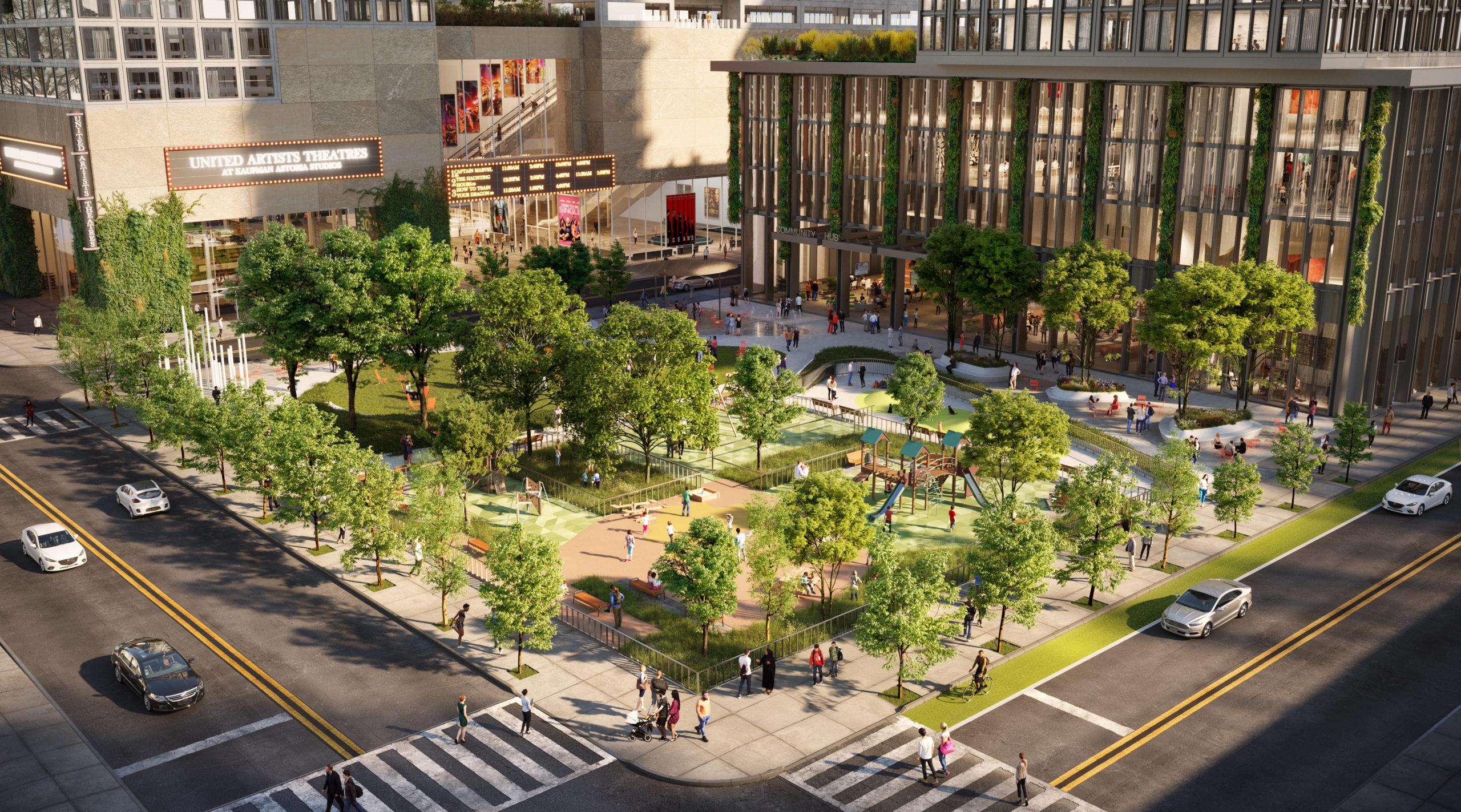
The project quickly became a controversial topic among residents, as concerns about displacement, lack of affordable housing, gentrification and not enough community outreach arose.
Councilwoman Julie Won, who represents that section of the district, pushed for 55 percent affordability for the 3,190-unit project recently, but indicated her support for the project at 45 percent affordability after negotiations with developers.
The project was ultimately passed by the City Council in November, with 46 votes in favor and one against. Its plan now features 1,436 affordable units – more than double the 711 units originally approved by the City Planning Commission.
“From Day 1, I have stood with my community in demanding deeper affordability from this development–and because we held the line, the Innovation QNS project has doubled the number of affordable units than initially offered, from 711 to 1,436 affordable units,” Won said in a statement.
More recently, locals clamored at the announcement of a new 25,000-seat soccer stadium for the New York City Football Club – slated to open in Willets Point in 2027.
The plan – spearheaded by Councilman Francisco Moya – includes 2,500 affordable homes (with no market rate components), a 650-seat school and a 250-room hotel.
Mayor Adams’ office projects that the development will bring in $6.1 billion in revenue over the next 30 years, as well as over 14,000 construction jobs and 1,550 permanent ones.


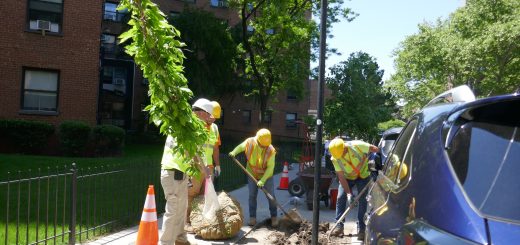

I don’t think the title of your article matches the content lol. Just kidding, mainly because I had some doubts after reading the article.
olympe: olympe casino – casino olympe
kamagra 100mg prix: Achetez vos kamagra medicaments – Kamagra Oral Jelly pas cher
https://pharmafst.com/# pharmacie en ligne avec ordonnance
kamagra livraison 24h: kamagra livraison 24h – Kamagra pharmacie en ligne
Achat mГ©dicament en ligne fiable: Livraison rapide – trouver un mГ©dicament en pharmacie pharmafst.com
Cialis sans ordonnance 24h [url=http://tadalmed.com/#]Acheter Cialis 20 mg pas cher[/url] Cialis en ligne tadalmed.com
Kamagra Oral Jelly pas cher: kamagra livraison 24h – kamagra pas cher
kamagra oral jelly: kamagra en ligne – kamagra gel
Achetez vos kamagra medicaments: acheter kamagra site fiable – kamagra oral jelly
acheter kamagra site fiable: Kamagra Commander maintenant – kamagra pas cher
https://tadalmed.shop/# Tadalafil 20 mg prix sans ordonnance
п»їpharmacie en ligne france: Pharmacie en ligne France – pharmacie en ligne livraison europe pharmafst.com
cialis prix: Acheter Cialis – cialis generique tadalmed.shop
vente de mГ©dicament en ligne [url=https://pharmafst.com/#]Pharmacies en ligne certifiees[/url] acheter mГ©dicament en ligne sans ordonnance pharmafst.shop
Acheter Cialis 20 mg pas cher: cialis sans ordonnance – Cialis sans ordonnance 24h tadalmed.shop
kamagra en ligne: Achetez vos kamagra medicaments – kamagra livraison 24h
Cialis sans ordonnance 24h: cialis sans ordonnance – Tadalafil 20 mg prix sans ordonnance tadalmed.shop
vente de mГ©dicament en ligne [url=https://pharmafst.com/#]Meilleure pharmacie en ligne[/url] trouver un mГ©dicament en pharmacie pharmafst.shop
Cialis en ligne: Acheter Viagra Cialis sans ordonnance – Cialis en ligne tadalmed.shop
Pharmacie Internationale en ligne: Medicaments en ligne livres en 24h – pharmacie en ligne france livraison belgique pharmafst.com
cialis generique: cialis prix – Cialis en ligne tadalmed.shop
Pharmacie sans ordonnance [url=https://pharmafst.com/#]pharmacie en ligne[/url] Pharmacie Internationale en ligne pharmafst.shop
kamagra pas cher: kamagra pas cher – Kamagra pharmacie en ligne
cialis prix: Tadalafil 20 mg prix en pharmacie – Tadalafil 20 mg prix sans ordonnance tadalmed.shop
Pharmacie en ligne livraison Europe [url=https://pharmafst.shop/#]pharmacie en ligne sans ordonnance[/url] п»їpharmacie en ligne france pharmafst.shop
pharmacie en ligne france pas cher: Pharmacie Internationale en ligne – pharmacie en ligne avec ordonnance pharmafst.com
https://pharmafst.shop/# Pharmacie Internationale en ligne
п»їpharmacie en ligne france: Medicaments en ligne livres en 24h – п»їpharmacie en ligne france pharmafst.com
Kamagra Oral Jelly pas cher: kamagra livraison 24h – Achetez vos kamagra medicaments
achat kamagra [url=http://kamagraprix.com/#]kamagra livraison 24h[/url] acheter kamagra site fiable
cialis prix: Tadalafil achat en ligne – Cialis generique prix tadalmed.shop
pharmacie en ligne sans ordonnance: pharmacie en ligne – vente de mГ©dicament en ligne pharmafst.com
https://kamagraprix.com/# Achetez vos kamagra medicaments
kamagra gel: kamagra oral jelly – kamagra 100mg prix
Cialis sans ordonnance pas cher: Cialis sans ordonnance 24h – Cialis sans ordonnance pas cher tadalmed.shop
kamagra pas cher: Kamagra Commander maintenant – achat kamagra
https://tadalmed.com/# Cialis sans ordonnance 24h
п»їpharmacie en ligne france: pharmacie en ligne pas cher – pharmacies en ligne certifiГ©es pharmafst.com
Kamagra Oral Jelly pas cher: Acheter Kamagra site fiable – acheter kamagra site fiable
Kamagra Commander maintenant: Acheter Kamagra site fiable – kamagra pas cher
Acheter Kamagra site fiable [url=http://kamagraprix.com/#]achat kamagra[/url] kamagra livraison 24h
Acheter Viagra Cialis sans ordonnance: Cialis en ligne – Tadalafil achat en ligne tadalmed.shop
Kamagra pharmacie en ligne: kamagra oral jelly – kamagra oral jelly
Kamagra pharmacie en ligne: kamagra oral jelly – kamagra 100mg prix
Pharmacie Internationale en ligne: pharmacie en ligne sans ordonnance – pharmacie en ligne pas cher pharmafst.com
Acheter Viagra Cialis sans ordonnance: cialis generique – Acheter Cialis 20 mg pas cher tadalmed.shop
kamagra livraison 24h [url=https://kamagraprix.com/#]Kamagra pharmacie en ligne[/url] Kamagra Oral Jelly pas cher
Cialis sans ordonnance 24h: Cialis generique prix – Acheter Cialis 20 mg pas cher tadalmed.shop
precription drugs from canada: canadian online drugstore – canadian pharmacy prices
mexican rx online: medication from mexico pharmacy – mexican drugstore online
MedicineFromIndia: medicine courier from India to USA – MedicineFromIndia
RxExpressMexico [url=https://rxexpressmexico.shop/#]mexican online pharmacy[/url] Rx Express Mexico
canadianpharmacymeds: Canadian pharmacy shipping to USA – precription drugs from canada
best canadian online pharmacy: Express Rx Canada – precription drugs from canada
canadian online pharmacy: Canadian pharmacy shipping to USA – canadian pharmacy king
Medicine From India [url=http://medicinefromindia.com/#]Medicine From India[/url] Medicine From India
mexico drug stores pharmacies: mexico drug stores pharmacies – Rx Express Mexico
ed drugs online from canada: Canadian pharmacy shipping to USA – canada drugs online
indian pharmacy online shopping: indian pharmacy online shopping – Medicine From India
canadian pharmacy 24h com [url=https://expressrxcanada.shop/#]Canadian pharmacy shipping to USA[/url] reliable canadian online pharmacy
indian pharmacy online shopping: world pharmacy india – п»їlegitimate online pharmacies india
Online medicine order: medicine courier from India to USA – Medicine From India
reddit canadian pharmacy: Generic drugs from Canada – legit canadian online pharmacy
canadian pharmacy online reviews: Express Rx Canada – canadian pharmacies
mexican rx online [url=https://rxexpressmexico.shop/#]mexican rx online[/url] mexican online pharmacy
RxExpressMexico: mexico drug stores pharmacies – mexico pharmacy order online
canadian discount pharmacy: canadian pharmacies online – canada drug pharmacy
indian pharmacy online shopping: indian pharmacy online – indian pharmacy
canadian mail order pharmacy [url=http://expressrxcanada.com/#]Express Rx Canada[/url] canadian drugstore online
Medicine From India: reputable indian pharmacies – Medicine From India
canadian pharmacy world: ExpressRxCanada – onlinecanadianpharmacy
legitimate canadian pharmacy online: Canadian pharmacy shipping to USA – ed drugs online from canada
Medicine From India [url=https://medicinefromindia.com/#]Medicine From India[/url] MedicineFromIndia
thecanadianpharmacy: Canadian pharmacy shipping to USA – canada drug pharmacy
RxExpressMexico: mexico pharmacy order online – mexico pharmacies prescription drugs
canadian valley pharmacy [url=https://expressrxcanada.shop/#]Generic drugs from Canada[/url] canada pharmacy online
Medicine From India: MedicineFromIndia – medicine courier from India to USA
https://medicinefromindia.com/# MedicineFromIndia
mexico drug stores pharmacies: mexican border pharmacies shipping to usa – mexican online pharmacy
pin up вход [url=http://pinuprus.pro/#]пин ап казино официальный сайт[/url] пинап казино
pin up az: pin up – pin up azerbaycan
pin up casino: pin up casino – pin up azerbaycan
пин ап казино официальный сайт: пинап казино – пинап казино
vavada casino [url=https://vavadavhod.tech/#]vavada[/url] vavada casino
pin up az: pin up azerbaycan – pin up casino
pin up azerbaycan: pin up casino – pin up casino
вавада официальный сайт [url=http://vavadavhod.tech/#]вавада[/url] vavada вход
pin-up: pin up – pin-up
вавада зеркало: вавада зеркало – вавада официальный сайт
пин ап вход: пинап казино – пин ап казино официальный сайт
pin-up casino giris: pin-up – pin-up
http://pinupaz.top/# pin up az
vavada casino [url=http://vavadavhod.tech/#]vavada[/url] вавада официальный сайт
вавада официальный сайт: vavada casino – vavada casino
пин ап вход: пин ап казино официальный сайт – пинап казино
pin up вход: pin up вход – пин ап казино
pin-up casino giris [url=http://pinupaz.top/#]pin up[/url] pinup az
пинап казино: pin up вход – пин ап вход
pin-up casino giris [url=http://pinupaz.top/#]pin-up[/url] pin up azerbaycan
пинап казино: пин ап казино – пинап казино
pinup az: pin-up – pin-up
пин ап зеркало: пин ап казино – пинап казино
vavada [url=http://vavadavhod.tech/#]vavada[/url] vavada casino
пинап казино: пин ап казино – пин ап зеркало
vavada вход [url=http://vavadavhod.tech/#]vavada[/url] vavada casino
вавада казино: vavada casino – vavada вход
vavada: вавада официальный сайт – vavada вход
pin up azerbaycan: pin up casino – pin up casino
вавада казино [url=http://vavadavhod.tech/#]vavada[/url] vavada
vavada вход: вавада официальный сайт – vavada casino
вавада: вавада официальный сайт – вавада казино
пин ап зеркало: пин ап зеркало – пин ап казино
pin-up [url=http://pinupaz.top/#]pin-up[/url] pin up
http://vavadavhod.tech/# вавада
вавада казино: вавада – vavada вход
пин ап казино официальный сайт: пин ап казино – пин ап казино официальный сайт
вавада зеркало [url=http://vavadavhod.tech/#]вавада зеркало[/url] вавада
вавада: вавада – вавада казино
vavada: вавада казино – vavada вход
pin up az: pin-up casino giris – pin up azerbaycan
вавада зеркало: vavada – вавада
pin-up casino giris: pin-up – pin up azerbaycan
вавада казино [url=http://vavadavhod.tech/#]vavada casino[/url] вавада официальный сайт
пин ап казино: пин ап казино официальный сайт – пин ап казино
вавада зеркало: вавада – вавада официальный сайт
https://pinuprus.pro/# pin up вход
pin-up casino giris: pin up azerbaycan – pinup az
пин ап казино официальный сайт [url=http://pinuprus.pro/#]пин ап казино официальный сайт[/url] пин ап вход
http://pinuprus.pro/# пин ап казино официальный сайт
pinup az: pin up az – pin up az
вавада зеркало [url=https://vavadavhod.tech/#]вавада казино[/url] вавада казино
пин ап зеркало: пин ап зеркало – пин ап вход
pin-up casino giris [url=https://pinupaz.top/#]pinup az[/url] pin up azerbaycan
pin-up casino giris: pin-up casino giris – pin up azerbaycan
пин ап зеркало [url=http://pinuprus.pro/#]пин ап казино официальный сайт[/url] пин ап казино
пин ап казино: пин ап казино – пинап казино
вавада [url=https://vavadavhod.tech/#]вавада официальный сайт[/url] vavada
pinup az: pin-up casino giris – pin-up
вавада зеркало: vavada casino – vavada
вавада казино: вавада зеркало – вавада официальный сайт
pin up вход [url=http://pinuprus.pro/#]пин ап вход[/url] пин ап казино официальный сайт
pinup az: pin up casino – pin-up casino giris
pin up az: pin-up – pinup az
вавада казино [url=http://vavadavhod.tech/#]вавада официальный сайт[/url] vavada casino
pin up вход: пин ап вход – pin up вход
вавада казино [url=http://vavadavhod.tech/#]вавада казино[/url] вавада официальный сайт
пин ап казино официальный сайт: пин ап казино официальный сайт – пин ап казино официальный сайт
https://pinupaz.top/# pin up
пин ап вход [url=http://pinuprus.pro/#]пин ап зеркало[/url] пин ап зеркало
pin-up casino giris: pin up az – pinup az
pin-up casino giris: pin up az – pin up az
http://pinupaz.top/# pin up az
vavada casino [url=https://vavadavhod.tech/#]вавада официальный сайт[/url] вавада официальный сайт
пин ап вход: пин ап вход – пин ап казино
pin up azerbaycan [url=http://pinupaz.top/#]pin up az[/url] pin up
пин ап казино [url=https://pinuprus.pro/#]пинап казино[/url] пин ап казино официальный сайт
пинап казино: пин ап вход – pin up вход
vavada [url=http://vavadavhod.tech/#]vavada casino[/url] вавада официальный сайт
pin up casino: pin up azerbaycan – pin up azerbaycan
https://pinupaz.top/# pin up
пин ап казино: пин ап зеркало – пин ап вход
вавада казино [url=http://vavadavhod.tech/#]вавада зеркало[/url] vavada вход
pin-up: pin up azerbaycan – pin up casino
http://pinupaz.top/# pin-up casino giris
пин ап казино: пин ап казино – пинап казино
pin-up [url=https://pinupaz.top/#]pin up azerbaycan[/url] pin up casino
https://vavadavhod.tech/# вавада казино
pin up azerbaycan: pin-up casino giris – pinup az
http://pinupaz.top/# pinup az
vavada вход: vavada – вавада казино
пин ап зеркало [url=http://pinuprus.pro/#]pin up вход[/url] пин ап казино официальный сайт
vavada: vavada вход – вавада казино
пин ап зеркало: пинап казино – пин ап казино официальный сайт
pin-up: pin-up casino giris – pin up az
pin up az [url=https://pinupaz.top/#]pinup az[/url] pin-up casino giris
pin up: pin up – pin up az
пин ап вход [url=https://pinuprus.pro/#]пин ап вход[/url] пин ап казино официальный сайт
https://pinupaz.top/# pin up casino
пин ап зеркало: пин ап вход – пинап казино
пин ап вход: пин ап казино – пин ап казино
vavada [url=https://vavadavhod.tech/#]вавада казино[/url] вавада казино
https://pinupaz.top/# pin-up casino giris
пин ап зеркало: pin up вход – пин ап вход
pin-up: pin-up casino giris – pin up azerbaycan
vavada вход [url=https://vavadavhod.tech/#]вавада официальный сайт[/url] вавада зеркало
vavada casino: vavada – вавада официальный сайт
пин ап зеркало: пин ап казино официальный сайт – пин ап вход
vavada casino [url=https://vavadavhod.tech/#]vavada casino[/url] вавада зеркало
modafinil legality: modafinil 2025 – safe modafinil purchase
same-day Viagra shipping: same-day Viagra shipping – no doctor visit required
https://zipgenericmd.shop/# discreet shipping ED pills
secure checkout Viagra: legit Viagra online – same-day Viagra shipping
Viagra without prescription: Viagra without prescription – order Viagra discreetly
https://modafinilmd.store/# safe modafinil purchase
buy generic Viagra online [url=https://maxviagramd.com/#]same-day Viagra shipping[/url] secure checkout Viagra
modafinil legality: verified Modafinil vendors – Modafinil for sale
modafinil pharmacy: Modafinil for sale – Modafinil for sale
modafinil pharmacy: Modafinil for sale – verified Modafinil vendors
https://modafinilmd.store/# verified Modafinil vendors
legal Modafinil purchase [url=http://modafinilmd.store/#]Modafinil for sale[/url] purchase Modafinil without prescription
secure checkout ED drugs: FDA approved generic Cialis – discreet shipping ED pills
verified Modafinil vendors [url=http://modafinilmd.store/#]modafinil pharmacy[/url] doctor-reviewed advice
cheap Cialis online: FDA approved generic Cialis – cheap Cialis online
fast Viagra delivery: best price for Viagra – Viagra without prescription
safe modafinil purchase: safe modafinil purchase – buy modafinil online
Viagra without prescription: discreet shipping – order Viagra discreetly
buy modafinil online: modafinil legality – verified Modafinil vendors
generic sildenafil 100mg: discreet shipping – same-day Viagra shipping
https://maxviagramd.com/# buy generic Viagra online
order Cialis online no prescription: cheap Cialis online – cheap Cialis online
safe online pharmacy: order Viagra discreetly – generic sildenafil 100mg
https://modafinilmd.store/# Modafinil for sale
legal Modafinil purchase: Modafinil for sale – modafinil pharmacy
modafinil 2025: purchase Modafinil without prescription – safe modafinil purchase
legal Modafinil purchase: purchase Modafinil without prescription – legal Modafinil purchase
best price Cialis tablets: FDA approved generic Cialis – cheap Cialis online
secure checkout Viagra: same-day Viagra shipping – Viagra without prescription
FDA approved generic Cialis: generic tadalafil – Cialis without prescription
affordable ED medication: Cialis without prescription – order Cialis online no prescription
same-day Viagra shipping [url=http://maxviagramd.com/#]no doctor visit required[/url] trusted Viagra suppliers
order Cialis online no prescription: best price Cialis tablets – Cialis without prescription
Viagra without prescription: trusted Viagra suppliers – safe online pharmacy
https://zipgenericmd.shop/# cheap Cialis online
affordable ED medication: affordable ED medication – secure checkout ED drugs
FDA approved generic Cialis: buy generic Cialis online – affordable ED medication
modafinil pharmacy: verified Modafinil vendors – modafinil legality
online Cialis pharmacy: affordable ED medication – best price Cialis tablets
trusted Viagra suppliers: same-day Viagra shipping – fast Viagra delivery
https://maxviagramd.com/# legit Viagra online
no doctor visit required: discreet shipping – same-day Viagra shipping
same-day Viagra shipping: same-day Viagra shipping – fast Viagra delivery
same-day Viagra shipping: cheap Viagra online – cheap Viagra online
trusted Viagra suppliers [url=http://maxviagramd.com/#]discreet shipping[/url] trusted Viagra suppliers
http://zipgenericmd.com/# secure checkout ED drugs
modafinil pharmacy: verified Modafinil vendors – safe modafinil purchase
buy prednisone 10mg online: buying prednisone – 20mg prednisone
prednisone 10mg tablets: prednisone 1 mg daily – PredniHealth
https://amohealthcare.store/# where to buy amoxicillin pharmacy
amoxicillin 50 mg tablets: amoxicillin 500 coupon – Amo Health Care
PredniHealth: prednisone no rx – prednisone acetate
Amo Health Care: Amo Health Care – Amo Health Care
where can i get cheap clomid [url=https://clomhealth.com/#]Clom Health[/url] how to get generic clomid tablets
https://amohealthcare.store/# Amo Health Care
amoxicillin 250 mg: buy amoxil – Amo Health Care
buying generic clomid prices: Clom Health – cost generic clomid pill
Amo Health Care: Amo Health Care – Amo Health Care
how to buy cheap clomid tablets: Clom Health – can you buy cheap clomid for sale
https://prednihealth.com/# prednisone for dogs
PredniHealth: PredniHealth – PredniHealth
PredniHealth: PredniHealth – prednisone 10mg canada
generic clomid without dr prescription [url=https://clomhealth.shop/#]Clom Health[/url] where to get generic clomid price
PredniHealth: where can i buy prednisone without a prescription – PredniHealth
https://amohealthcare.store/# Amo Health Care
can you buy generic clomid without a prescription: Clom Health – where to get clomid price
can i get clomid price: Clom Health – clomid cheap
where can i buy cheap clomid without prescription: Clom Health – how to buy generic clomid without prescription
https://amohealthcare.store/# where can you buy amoxicillin over the counter
how to get generic clomid tablets: Clom Health – how to get generic clomid pills
where to get generic clomid pills [url=https://clomhealth.shop/#]where buy generic clomid tablets[/url] where can i get cheap clomid for sale
generic amoxicillin online: amoxicillin buy online canada – Amo Health Care
prednisone 5443: prednisone for sale online – prednisone 2.5 mg price
https://prednihealth.shop/# PredniHealth
Amo Health Care [url=https://amohealthcare.store/#]amoxicillin online without prescription[/url] can you buy amoxicillin over the counter canada
where to buy generic clomid for sale: Clom Health – can i get cheap clomid now
cost of generic clomid without prescription: where to get cheap clomid prices – how to buy cheap clomid no prescription
best price for cialis: how long does tadalafil take to work – adcirca tadalafil
https://tadalaccess.com/# is generic tadalafil as good as cialis
cialis 800 black canada [url=https://tadalaccess.com/#]Tadal Access[/url] brand cialis australia
buy tadalafil powder: TadalAccess – cialis delivery held at customs
price of cialis at walmart: buying cialis in canada – is tadalafil and cialis the same thing?
https://tadalaccess.com/# cialis pill
when should you take cialis: cialis testimonials – cialis back pain
price of cialis [url=https://tadalaccess.com/#]TadalAccess[/url] why does tadalafil say do not cut pile
tadalafil generic in usa: cialis for women – generic cialis online pharmacy
https://tadalaccess.com/# what doe cialis look like
cialis tadalafil 10 mg: where to buy cialis – letairis and tadalafil
cialis information: TadalAccess – cialis with dapoxetine
https://tadalaccess.com/# cialis bodybuilding
cialis ontario no prescription: Tadal Access – cialis timing
when does tadalafil go generic [url=https://tadalaccess.com/#]Tadal Access[/url] tadalafil without a doctor prescription
what to do when cialis stops working: TadalAccess – cialis canada online
https://tadalaccess.com/# can i take two 5mg cialis at once
https://tadalaccess.com/# prices on cialis
buy cialis toronto: side effects cialis – cialis free 30 day trial
cialis results: canadian pharmacy generic cialis – what does cialis look like
cialis 5mg cost per pill [url=https://tadalaccess.com/#]Tadal Access[/url] cialis tadalafil 20mg price
https://tadalaccess.com/# cialis free
ordering tadalafil online: what is the difference between cialis and tadalafil – u.s. pharmacy prices for cialis
what is cialis used for: does cialis make you last longer in bed – non prescription cialis
https://tadalaccess.com/# buy cialis no prescription
cialis soft: TadalAccess – cialis canada free sample
when does cialis patent expire: TadalAccess – can i take two 5mg cialis at once
https://tadalaccess.com/# can you purchase tadalafil in the us
cialis timing [url=https://tadalaccess.com/#]stockists of cialis[/url] tadalafil versus cialis
cialis cost at cvs: TadalAccess – cialis vs sildenafil
buy generic cialis: Tadal Access – cialis sample pack
https://tadalaccess.com/# where can i buy cialis online in australia
tadalafil (exilar-sava healthcare) [generic version of cialis] (rx) lowest price: cialis generic for sale – no prescription tadalafil
blue sky peptide tadalafil review [url=https://tadalaccess.com/#]TadalAccess[/url] tadalafil generic in usa
cialis canada prices: order generic cialis – over the counter drug that works like cialis
https://tadalaccess.com/# buy cialis tadalafil
cialis results: Tadal Access – canadian cialis 5mg
cialis before and after: Tadal Access – generic cialis tadalafil 20mg india
https://tadalaccess.com/# cialis street price
cialis indications: Tadal Access – what possible side effect should a patient taking tadalafil report to a physician quizlet
side effects cialis: TadalAccess – cialis online reviews
https://tadalaccess.com/# cialis slogan
cialis stopped working: Tadal Access – why is cialis so expensive
https://tadalaccess.com/# cialis otc switch
buy cipla tadalafil [url=https://tadalaccess.com/#]TadalAccess[/url] what are the side effect of cialis
cialis generic: cialis prices in mexico – what does a cialis pill look like
purchase cialis online: is there a generic cialis available – pharmacy 365 cialis
https://tadalaccess.com/# free coupon for cialis
cialis paypal canada: cialis company – maximum dose of cialis in 24 hours
https://tadalaccess.com/# order cialis online cheap generic
cialis once a day: price of cialis – cialis experience forum
buy cialis generic online 10 mg: tadalafil cheapest price – cialis tadalafil & dapoxetine
https://tadalaccess.com/# buy cialis online from canada
pictures of cialis: sildenafil vs tadalafil vs vardenafil – cialis dose
cialis purchase: Tadal Access – canadian pharmacy cialis 40 mg
cialis or levitra [url=https://tadalaccess.com/#]is tadalafil available at cvs[/url] cialis reviews
https://tadalaccess.com/# trusted online store to buy cialis
purchase cialis online cheap: cialis 100 mg usa – tadalafil lowest price
cialis vs sildenafil: canada drug cialis – cialis tadalafil tablets
typical cialis prescription strength [url=https://tadalaccess.com/#]Tadal Access[/url] cheap cialis online tadalafil
cialis patent expiration 2016: tadalafil citrate research chemical – cialis professional review
cheap cialis pills: TadalAccess – cialis cheapest price
cialis trial: TadalAccess – buy tadalafil online no prescription
cialis without prescription: tadalafil brand name – cialis advertisement
https://tadalaccess.com/# generic cialis tadalafil 20mg reviews
cialis overdose [url=https://tadalaccess.com/#]pregnancy category for tadalafil[/url] where can i buy cialis online in australia
buy tadalafil online canada: cialis going generic – cialis black 800 mg pill house
https://tadalaccess.com/# cialis black
cialis for bph reviews [url=https://tadalaccess.com/#]Tadal Access[/url] what does cialis do
buy voucher for cialis daily online: generic cialis 20 mg from india – where to buy cialis online for cheap
cialis online usa: TadalAccess – cialis tadalafil 5mg once a day
https://tadalaccess.com/# cialis in canada
blue sky peptide tadalafil review: cialis super active – san antonio cialis doctor
no presciption cialis: buying cialis online safe – cialis manufacturer coupon
https://tadalaccess.com/# cialis price costco
when will cialis be over the counter: where to buy generic cialis – cialis 5mg price walmart
cialis dosage reddit: TadalAccess – cheap cialis by post
https://tadalaccess.com/# wallmart cialis
cialis generic overnite [url=https://tadalaccess.com/#]what does cialis treat[/url] what is tadalafil made from
buying cialis internet: TadalAccess – best reviewed tadalafil site
cialis and melanoma: tadalafil tablets – cialis online paypal
https://tadalaccess.com/# special sales on cialis
cialis canada online: blue sky peptide tadalafil review – canadian pharmacy generic cialis
buy cialis online reddit: TadalAccess – cialis price south africa
https://tadalaccess.com/# cialis professional review
cialis tadalafil 20 mg: tadalafil eli lilly – buy cialis generic online 10 mg
generic tadalafil cost: Tadal Access – cialis tadalafil 20mg kaufen
cialis prostate [url=https://tadalaccess.com/#]order cialis from canada[/url] cialis prescription cost
https://tadalaccess.com/# why does tadalafil say do not cut pile
cialis one a day with dapoxetine canada: sildalis sildenafil tadalafil – cialis online usa
what is the use of tadalafil tablets [url=https://tadalaccess.com/#]Tadal Access[/url] cialis review
https://tadalaccess.com/# cialis dosage for bph
buy cialis in canada: TadalAccess – cialis mechanism of action
cialis effectiveness [url=https://tadalaccess.com/#]sanofi cialis otc[/url] cheap cialis canada
https://tadalaccess.com/# cialis and poppers
canada drugs cialis: TadalAccess – tadalafil hong kong
canadian pharmacy cialis brand [url=https://tadalaccess.com/#]Tadal Access[/url] cialis dapoxetine overnight shipment
https://tadalaccess.com/# cialis online pharmacy australia
cialis buy without: TadalAccess – mint pharmaceuticals tadalafil reviews
price of cialis in pakistan: tadalafil no prescription forum – cialis black review
cheap cialis generic online: how to get cialis without doctor – active ingredient in cialis
https://tadalaccess.com/# cialis for daily use dosage
https://tadalaccess.com/# cialis 10mg reviews
cialis shelf life: Tadal Access – cialis reviews
https://tadalaccess.com/# cialis without a doctor prescription canada
online pharmacy cialis: TadalAccess – where can i buy cialis online
maximum dose of tadalafil: Tadal Access – tadalafil citrate liquid
https://tadalaccess.com/# cialis sell
buy cialis no prescription: Tadal Access – cialis review
https://tadalaccess.com/# when will generic cialis be available in the us
cialis san diego: cialis prices in mexico – canadian pharmacy cialis brand
https://tadalaccess.com/# tadalafil canada is it safe
who makes cialis: TadalAccess – cialis indien bezahlung mit paypal
https://tadalaccess.com/# centurion laboratories tadalafil review
cialis 5mg 10mg no prescription [url=https://tadalaccess.com/#]tadalafil cost cvs[/url] cialis effectiveness
cialis generico: cialis professional 20 lowest price – cialis tadalafil 5mg once a day
https://tadalaccess.com/# cialis and nitrates
order cialis canada: tadalafil and voice problems – cialis generic name
Medications online Australia: Pharm Au 24 – Discount pharmacy Australia
Ero Pharm Fast: cheap ed pills online – online ed pills
http://eropharmfast.com/# Ero Pharm Fast
buy antibiotics for uti: buy antibiotics online uk – cheapest antibiotics
over the counter antibiotics: cheapest antibiotics – get antibiotics without seeing a doctor
Buy medicine online Australia [url=https://pharmau24.shop/#]Buy medicine online Australia[/url] Licensed online pharmacy AU
buy ed medication online: where can i buy ed pills – Ero Pharm Fast
erection pills online: Ero Pharm Fast – Ero Pharm Fast
buy antibiotics from canada: buy antibiotics online uk – Over the counter antibiotics pills
https://eropharmfast.shop/# Ero Pharm Fast
antibiotic without presription: BiotPharm – over the counter antibiotics
Medications online Australia: Buy medicine online Australia – PharmAu24
Medications online Australia [url=https://pharmau24.shop/#]Pharm Au 24[/url] Online drugstore Australia
https://biotpharm.com/# buy antibiotics online
Over the counter antibiotics for infection: cheapest antibiotics – get antibiotics without seeing a doctor
buy antibiotics online: buy antibiotics online – antibiotic without presription
https://biotpharm.com/# antibiotic without presription
buy antibiotics from india: Biot Pharm – cheapest antibiotics
Ero Pharm Fast: Ero Pharm Fast – Ero Pharm Fast
Licensed online pharmacy AU [url=https://pharmau24.shop/#]Discount pharmacy Australia[/url] Online medication store Australia
Ero Pharm Fast: ed doctor online – Ero Pharm Fast
online pharmacy australia: Pharm Au 24 – Buy medicine online Australia
https://eropharmfast.shop/# Ero Pharm Fast
Over the counter antibiotics pills: buy antibiotics online – cheapest antibiotics
buy antibiotics from india [url=https://biotpharm.com/#]BiotPharm[/url] cheapest antibiotics
Buy medicine online Australia: PharmAu24 – Buy medicine online Australia
Over the counter antibiotics pills: buy antibiotics online uk – buy antibiotics online